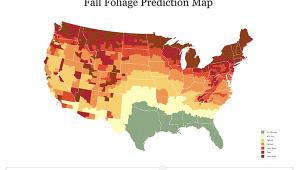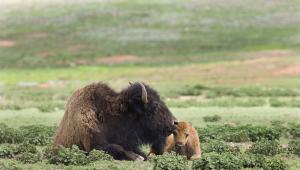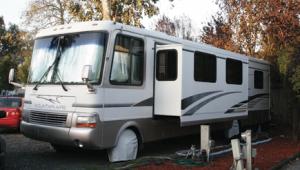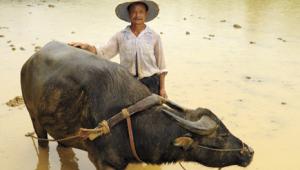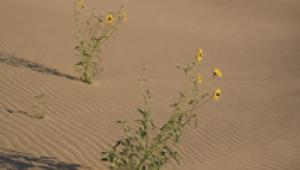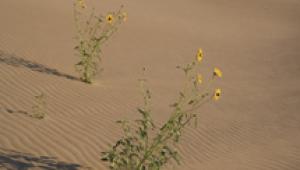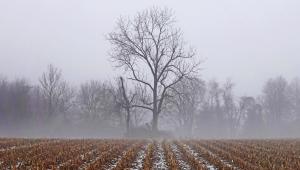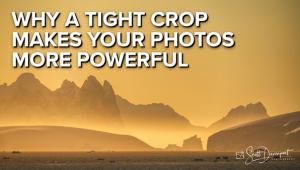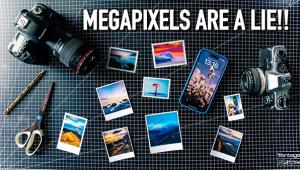Self Assignment
Photographing During The Witching Hour
Street Photography On Halloween Page 2
In February of 2002 I acquired a
new Leica M7 with autoexposure capabilities. Until then (from 1983-2002) I had
carried only one camera and one lens with me in the street, the M3 with a 35mm
f/1.4. Now I carry two cameras in case one fails--it has been known to
happen. The M3 with a 50mm f/2 has become my back-up (usually carried in my
jacket pocket--Leica rangefinders are conveniently small), and the M7 as
my main camera. I place the M7 on automatic exposure and don't think about
it--unless I'm using flash or there is strong backlighting. I have
found that, with the exception of backlit situations, the M7's meter is
exceptionally accurate, even at night.
For years I considered myself a "purist" and always worked with
available light. Last year I decided to play with the Leica SF 20 flash. After
all, if you don't try new things, you become stale at what you do. Photographer
Bill Brandt said, "A photographer can even become a prisoner of his own
rules. Unless he invents new ones, he will soon copy himself, and his work will
become sterile and repetitive." Remember this and make it your credo.
Like the Leica camera, the SF 20 flash fits easily in my pocket so I don't
walk around the streets with a neon sign saying "photographer...photographer."
In a further effort to avoid looking like a photographer I search for lightweight
jackets with large pockets on the inside, and have even had pockets sewn in.
Jean jackets are especially good for this. There is absolutely nothing wrong
with looking like a photographer--it's just that people relate to
you differently if they think you are a professional than just another tourist
with a camera taking snapshots.
There are many ways to use flash for street photography. One is to place the
flash on top of the camera and
simply illuminate the scene. If you're going to do this, set the flash
at about double the film's rated ISO. For
example, if you are using Ilford FP4+, which is rated at ISO 125, set the flash
at ISO 250, and expose accordingly.
 |
|
|
Another method, one which I find
more interesting, is to use long exposures--1/4, 1/2, or 1 sec--setting
the camera to discharge the flash at the moment the shutter is released (first
curtain), or just before the shutter closes (second curtain). Both techniques
will freeze the subject and allow some motion in the image.
With first curtain, the subject is sharply focused when the flash is discharged,
then becomes a blur. With second curtain, the subject is seen as a blur, then
suddenly appears sharp just before the shutter curtain closes and the flash
discharges. In the first instance, the blur is usually in front of the subject
(unless they are moving backward, which is rare), and in the second instance,
the blur is usually behind the subject.
Both the Olympus E-1 digital camera and the Minolta Maxxum 7 film camera allow
you to choose between first or second curtain. If you are using a camera that
does not have a second curtain function, you can simulate second curtain by
setting a long exposure and manually firing the flash before the shutter curtain
closes. Have your finger on the flash test button, release the shutter on the
camera, and before the exposure is over discharge the flash. This can create
an effect that is even more interesting if you set your shutter speed at 1 sec
and manually discharge the flash in the middle of the exposure.
While having a super-fast film (Fuji Neopan 1600, Kodak P3200, Ilford Delta
3200) is a boon for available light, a slower film works better for flash exposures.
I like to use Ilford HP5+ (ISO 400) or even FP4+ (ISO 125) for flash photography
in the street. To retain the nighttime ambiance, set the exposure according
to your camera's meter, and set the flash manually to underexpose by at
least one stop. FP4+ film will allow much longer exposures wide-open, whereas
HP5+ film will allow you to stop down for more depth of field. Both create interesting
effects. However, it is usually not possible to photograph using a flash and
remain undetected.
To work incognito means available
light, or as I prefer to call it at night, available darkness. Digital SLRs
are a great improvement over film SLRs for remaining invisible. Setting your
digital camera to an EI of 1600 or 3200 will allow you to photograph most effectively
in low-light situations, but be sure to check to see if your exposure is correct
before spending the entire night over- or underexposing. The noise created by
boosting the ISO on a digital camera is equivalent to the excess grain, which
occurs when film is pushed during exposure and development in order to obtain
photographs in low light. In both cases, digital noise and increased film grain,
the effect usually serves to enhance the nighttime effect.
The Olympus E-1, which I am currently using, has a normal EI range between 100
and 800. Enabling ISO Boost on the Custom 1 Menu extends that range to 3200.
The mirror on the E-1 is so well dampened that vibration is held to a minimum,
allowing for slower shutter speeds than those possible on film SLRs. (There
is still the nuisance of losing sight of your subject for an instant while the
mirror moves up and down, but if an SLR is what you have to use you must learn
to live with it.)
 |
|
|
Even though digital SLRs do work well for low-light photography the rangefinder has other advantages. In addition to not having a mirror, the lenses found on Leica rangefinder cameras are marked for hyperfocal focusing (a.k.a., zone focusing). F/stops are marked on either side of the lens focus mark. When you set the f/stop on the lens to, say, f/5.6, anything between the two f/5.6s which appear on either side of the focusing mark will be within your depth of field. For example, using my 35mm f/1.4 lens set at f/5.6, if I set my focus distance at 8 ft, I don't have to refocus every time I raise the camera to my eye, as long as the subject is somewhere between 6 and 12 ft.
This technique will also allow you
to "palm" the camera, a technique used extensively by Garry Winogrand,
in which you hold the camera at your hip and press the shutter release with
the palm of your hand. This is a good technique when you don't want someone
to know you are photographing them. I used it extensively in Los Angeles to
photograph drug dealers and other unsavory characters on the street. Use a lens
with a focal length of at least 35mm to ensure all of your subject is included,
and be prepared to run.
Both of the mentioned techniques, hyperfocal focusing and palming, are not possible
with autofocus cameras. In the first, the lenses aren't marked properly,
and using autofocus in low light may give you a sharp image of your main subject,
but by the time it locks in on the subject, even with infrared detection, you
will often miss the decisive moment. In the second, palming the camera to avoid
detection does not work with the lens focusing in and out.
 |
|
|
While technique is important, the
manner in which you approach and record your subject is equally important. In
most cases, I usually don't make any attempt to disguise the fact I am
photographing someone. I may do it quickly to capture a spontaneous motion,
but there is no attempt on my part to hide the camera. With some exceptions
most people are flattered that you think they are important enough to photograph.
I have even had the experience of walking past someone to photograph someone
else, only to have them say, "What about me?"
People want to be noticed, they want to be remembered, they want to be immortalized.
And even if they know they will never see you again, or your photographs of
them, there is a part of them which knows that their life has been recorded,
that someone has thought them to be important and interesting, and that there
is a chance they will be remembered. Nowhere is that more true than the Halloween
Witching Hour, when people have gone out of their way to be seen.
Steve Anchell is an internationally
published photographer/writer. Anchell has authored many books on technique
and has conducted workshops since 1979. This year he will be leading a special
workshop for the International Center of Photography in New York City entitled
"Halloween in the Village." For more information on this workshop,
contact ICP at (212) 857-0001 or visit www.icp.org,
or visit Anchell's website, www.anchellworkshops.com.
- Log in or register to post comments
